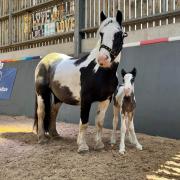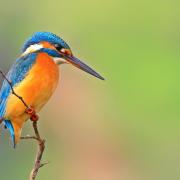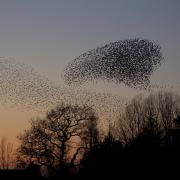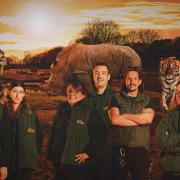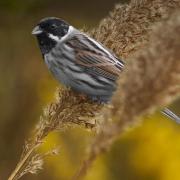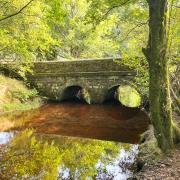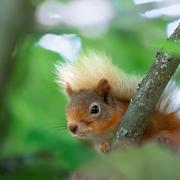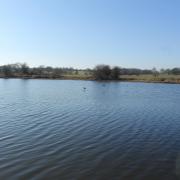A revival of traditional skills, red squirrels and beautiful butterflies are predicted for this corner of old Lancashire. Mike Glover reports

BEFORE there were tourists, before there were even sheep on the fells of the Lake District, there were trees. And for hundreds of years, among the trees was industry.
It is hard to imagine the Lakes as a landscape where the smells of charcoal and gun-powder making and iron smelting, the sounds of trees being cut for coppicing and the sight of industrial smoke drifted through broad-leaved forests.
But there are hints and vestiges of this forgotten world, and five years of behind-the-scenes planning comes to fruition this month with work starting on a scheme to pay homage to the time when the Lakes hosted the pre-industrial revolution.
The aim is not so much to turn back time in historic Lancashire’s Rusland Valley, between Coniston Water and Windermere, but instead to restore practices that thrived in Medieval England and research and record evidence of this past.

The beneficiaries of the scheme would be legion: traditional broad leaved trees, like oak, birch, ash and larch; insects like high brown fritillary and Duke of Burgundy butterflies; small mammals like red squirrels and hazel dormice; people who would be trained in traditional skills and whole communities galvanised by working together.
Rusland Horizons, as it is known, grew out of a series of public consultations back in 2010. Because the valley is a rare woodland habitat, organisations like the Lake District National Park Authority, Natural England and the Forestry Commission decided it was important to give it special attention.
Consulted communities raised as issues the lack of opportunities for local people and the dying of traditional skills.
By the mid-1950s many of the activities which led to the management of the woodlands, like coppicing and the use of timber for the making of bobbins to supply the Lancashire mills, had all but gone.

Without the coppicing and wood management the trees were becoming too big and blotting out sunlight, preventing plants and creatures depending on the glades to thrive.
For many of the species, the Rusland Valley was one of the last strongholds, having already been lost to the rest of the United Kingdom.
‘People had noticed that the landscape of the Rusland Valley was changing. Traditional skills and the way of life were dying out,’ said Rusland Horizons’ former development officer, Marian Jones.
The first application for Heritage Lottery Funding was turned down in 2013, but given much positive encouragement to carry on developing the project.

That was when Marian, who has a MA in Heritage, Education and Interpretation from Newcastle University and extensive experience of Heritage Lottery Funds was recruited.
Her mission was to put flesh on the bones of the projects and specify how they would benefit the wildlife, communities and the economy.
The bid for a total of £1.5m spread over the years from 2016-19 was submitted in September and at the end of November, the delighted committee behind the bid heard they had been given more than £1.3m by The Heritage Lottery Fund (under their Landscape Partnership Scheme).
Other sources of cash are the Lake District National Park Authority; various European grants; Natural England; Local Parish Councils; Private donations, Trusts, Charities, Foundations; plus significant in-kind match funding (mainly volunteer time).

Work is due to start as soon as possible in 2016, although initially the priority is recruiting a scheme manager and other staff.
Chairman of the Partnership, Colin Barr, said: ‘We’re delighted that the Heritage Lottery Fund has given us this substantial grant.
‘It will give us the opportunity to re-vitalise many of the traditional woodland industries in the scheme area, as well as providing wonderful opportunities for training and enjoyable learning. It’s great to know that the HLF share our enthusiasm for this very special place.’
Each of 15 projects will start through 2016 with apprentices appointed in the summer.
The projects can be divided into four groups:
Heritage Skills will establish an apprenticeship scheme ensuring the continuation of traditional skills like hedge-laying, coppicing, and repairing dry-stone walls; run workshops and courses for volunteers; and inspire renewed interest in woodland produce from local firewood to oak will baskets;
Woodlands and Wildlife will re-instate a coppicing programme, survey rare species; restore upland hay meadows and set up a community wood-fuel scheme;
Hidden Heritage will work with volunteers to research, protest, restore and interpret archaeological evidence of the old industries; and
Along the Greenwood Trail will improve the path network and develop information sources to draw people along the routes highlighting local history.
It is believed that many charcoal pits, woodland huts and other itedms from the area’s industrial heritage going back to the bronze-age remain undiscovered, particularly on Bethecar Moor, an area never intensively farmed.
Up to around the 12th century the valley was totally forested and used mainly for hunting. But then it was acquired by the monks at Furness Abbey who had ironworks across Coniston and used the wood from Rusland to make charcoal.
It was only when the land was cleared, that the sheep were put out to graze the land.
The Lake District was the capital of iron smelting before it moved away to the West Midlands and Wales. In the Lakes the emphasis moved to gunpowder making.
At the same time, it was discovered the bark from oak trees was particularly high in tannins, so tanning leather was also prevalent.
‘There is an awful lot of history to tell. Some of it is still in living memory, so an oral history is part of the project,’ said Marian.
Around 1000 people live in the 90 square kilometres of the scheme area, based on the Rusland Valley. So how will they benefit?
‘We hope that we can help support local businesses, with coppicing, crafts and land management. Then the new trails will help catering and other attractions. By getting more people skilled up then there will be more employment opportunities locally.
‘We also hope to improve the local well-being by having an army of volunteers working together and getting involved.’
Already 15 local land-owners, including LDNPA and the Forestry Commission are signed up.
‘What gives us confidence is that the wood fuel market price has increased so that it is now viable to manage woodland again.
‘This is a community-led initiative that grew out of the concerns expressed by local people and has the backing of those organisations with the resources to tackle the issues raised.’
Other supporters include Cumbria Wildlife Trust, Butterfly Conservation, Westmorland Red Squirrel Society and Bill Hogarth Memorial Apprenticeship Trust, named after a local coppice firm of which there is still a handful in the Lakes.
Already volunteers from Ulverston and Barrow are learning to use coppicing to make charcoal and build a forge.
The sights, sounds and smells that once filled the glades of the Lake District may soon be restored, to the woodlands of Rusland Valley at least.




